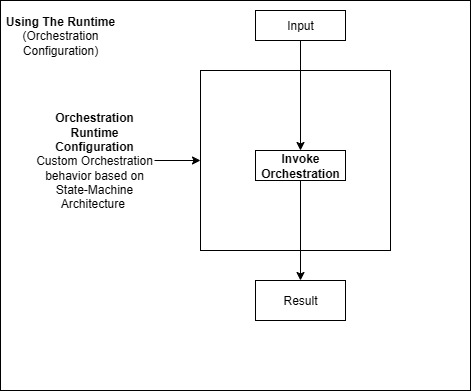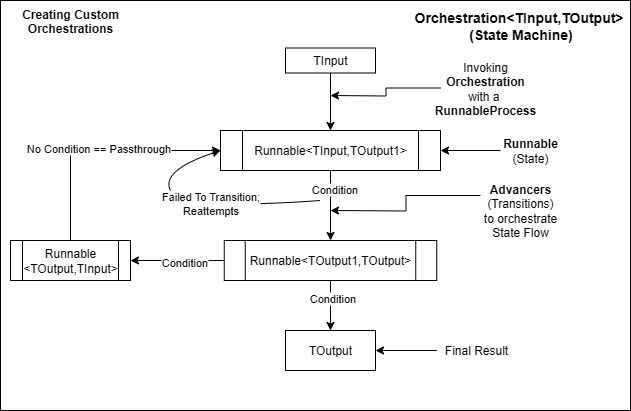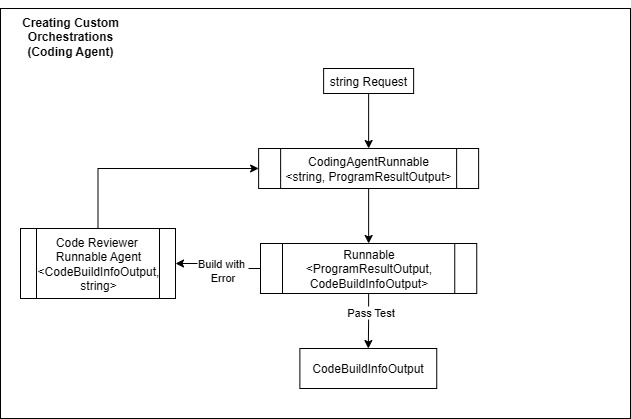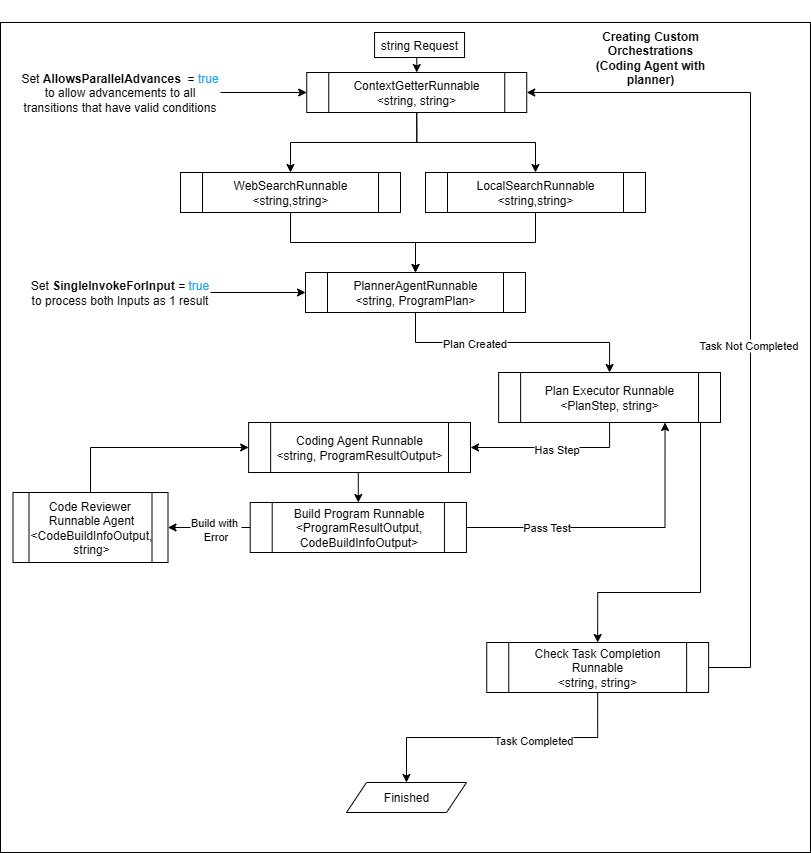Agent Orchestration Basics
Overview
Power of the Orchestration Runtime Configuration
Orchestration powered by State Machine architecture

Inside the Orchestration Invoke

- Think of a
Orchestrationas a State Machine with strongly typedTInputandTOutputvalues for input validation - Think of a
Runnableas a state within a State Machine with strongly typedTInputandTOutputvalues for input validation - Think of a
Advanceras a state transition that has access toTOutputof the state to for conditional checks for Advancing to nextRunnable - Using the
Advanceryou can even add a Conversion Method as an input parameter to the transition to facilitate advancing to a Runnable with a invalidTInput(TInput!=TOutput)
Creating Custom Orchestration Workflows

Create Complex Orchestration Workflows

Quick Start
Best Practices
- Define clear handoff points between agents
- Maintain state across agent transitions
- Implement error handling at each stage
- Monitor orchestration progress
- Log agent interactions for debugging